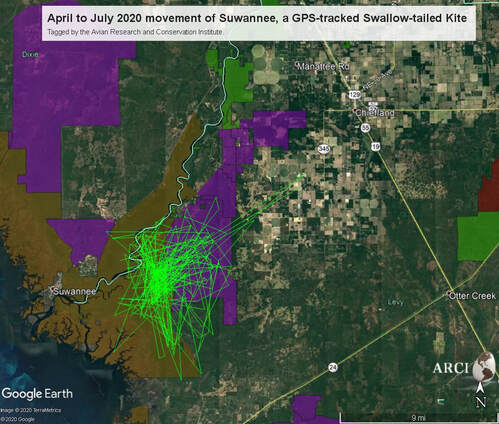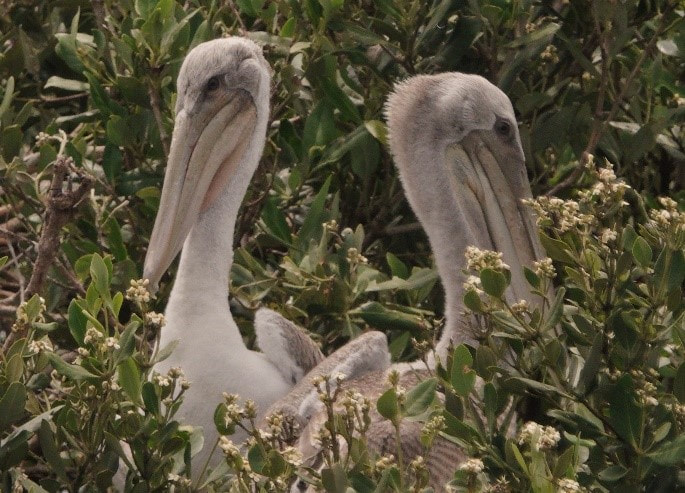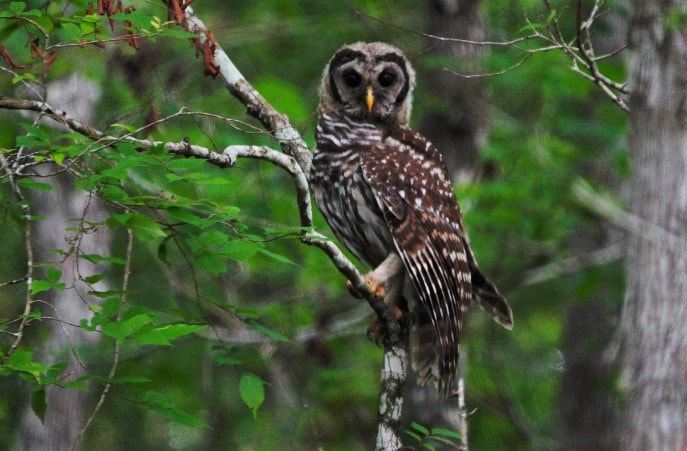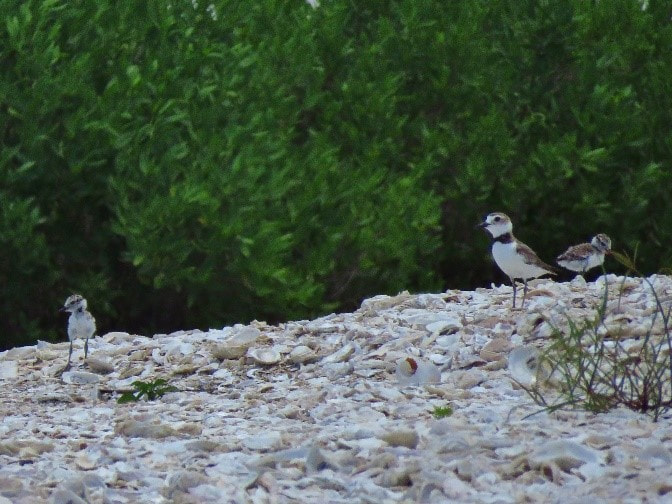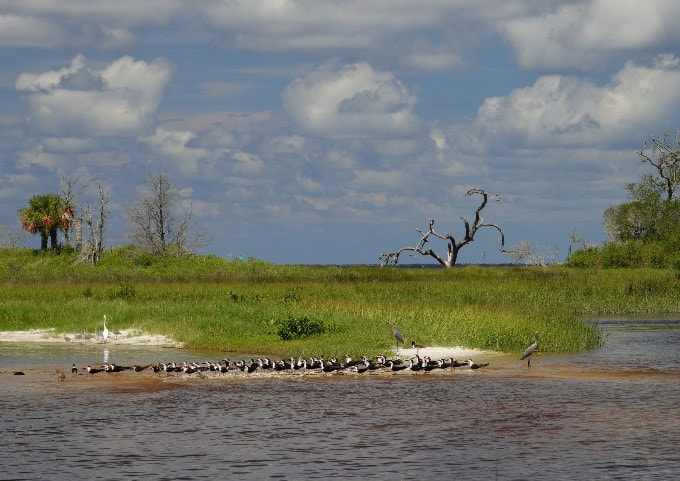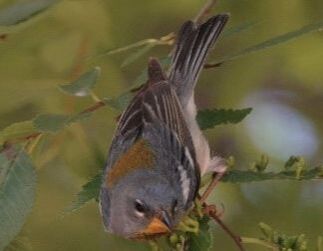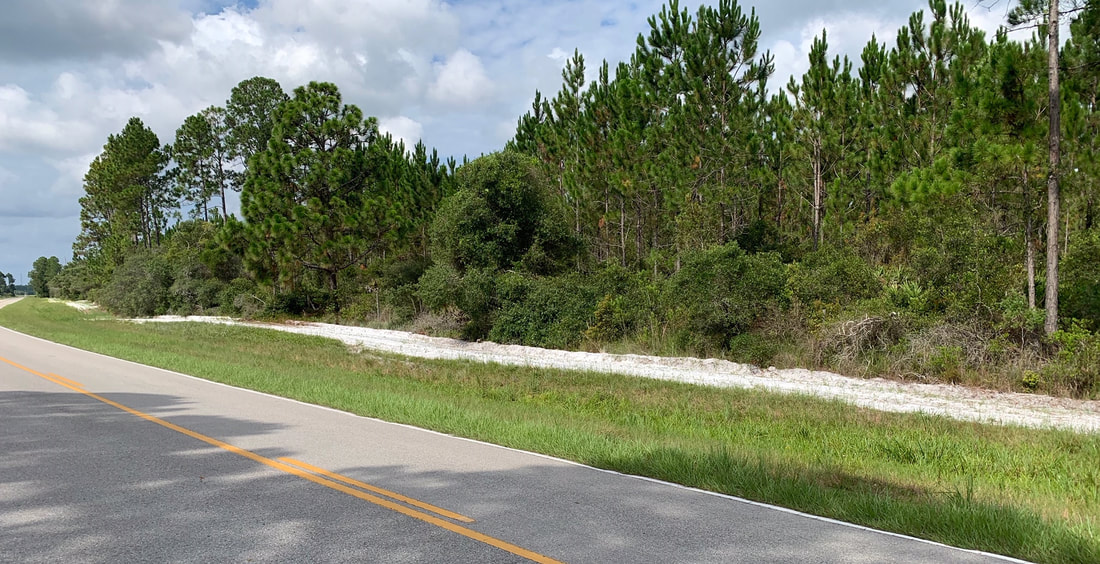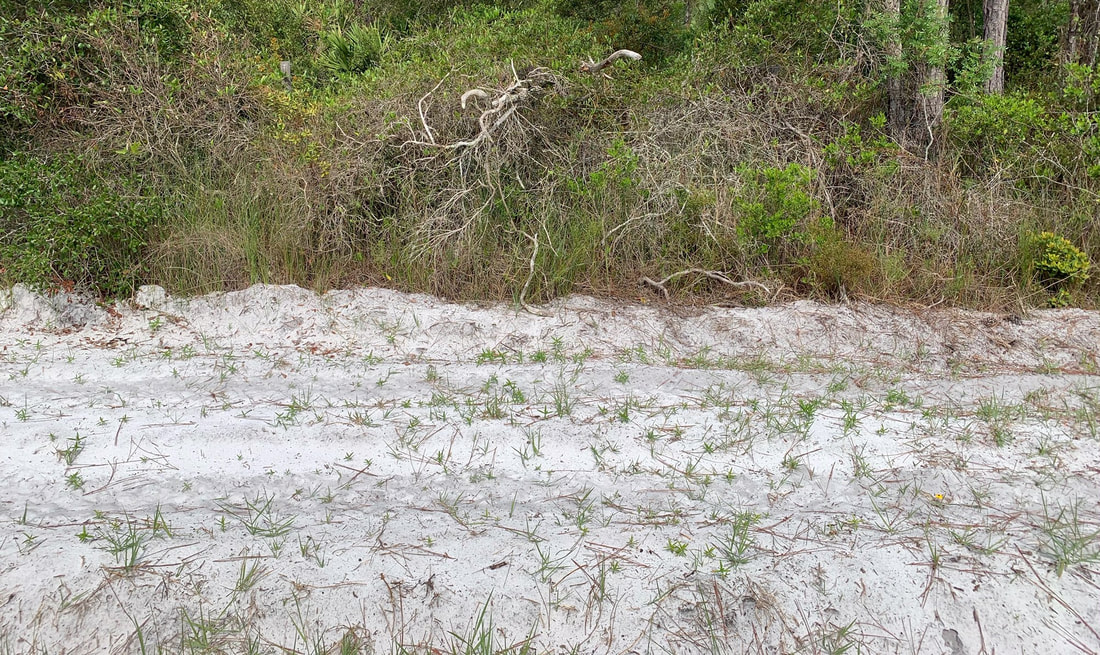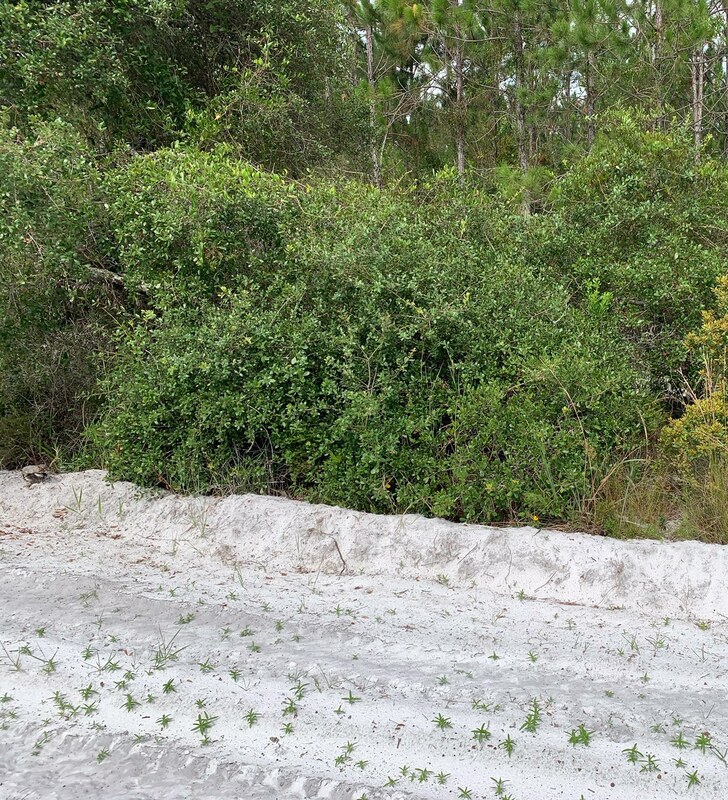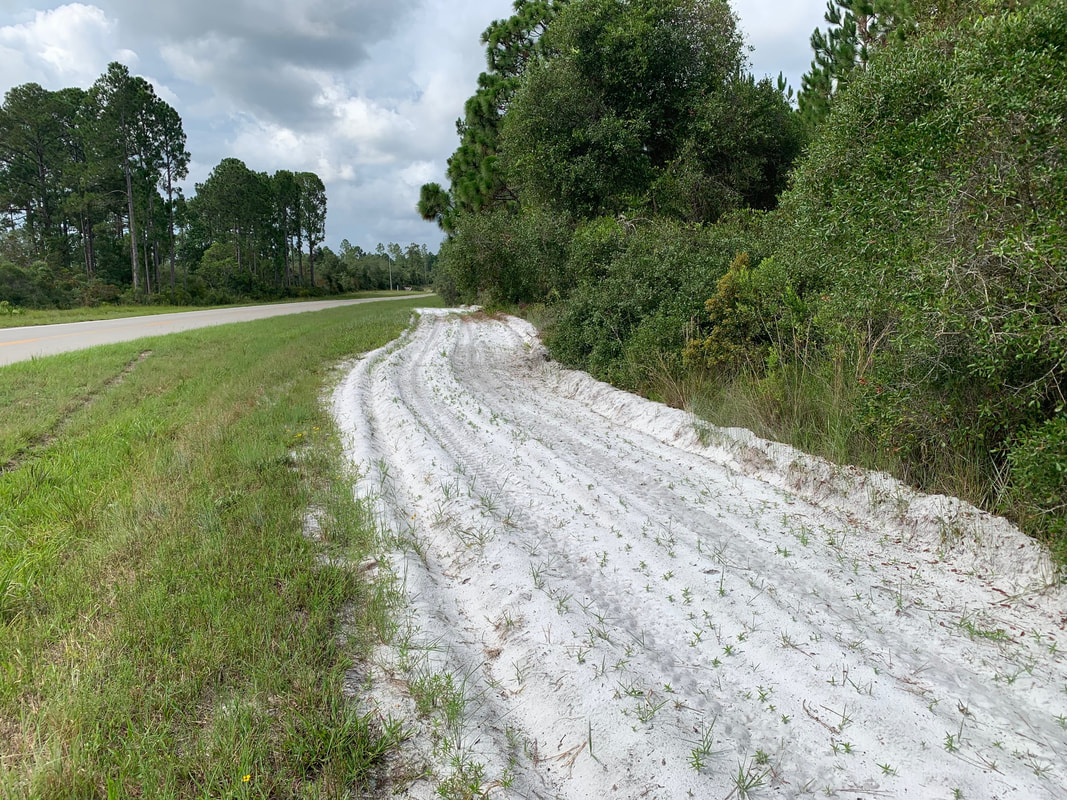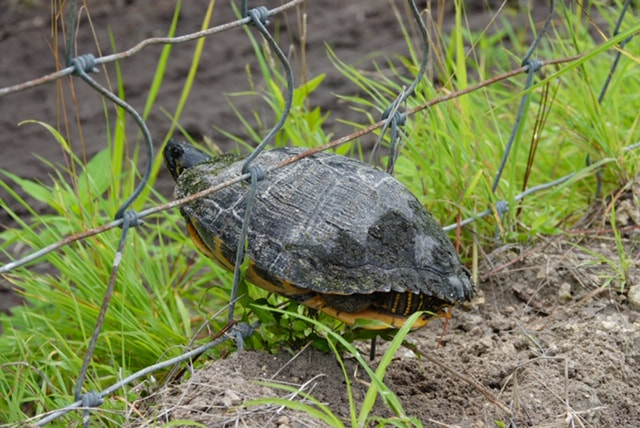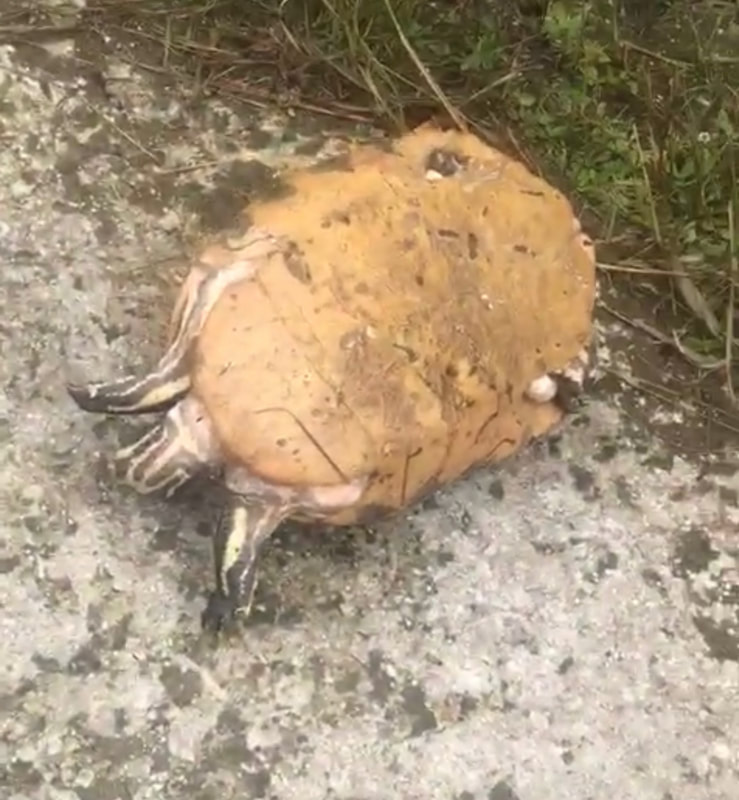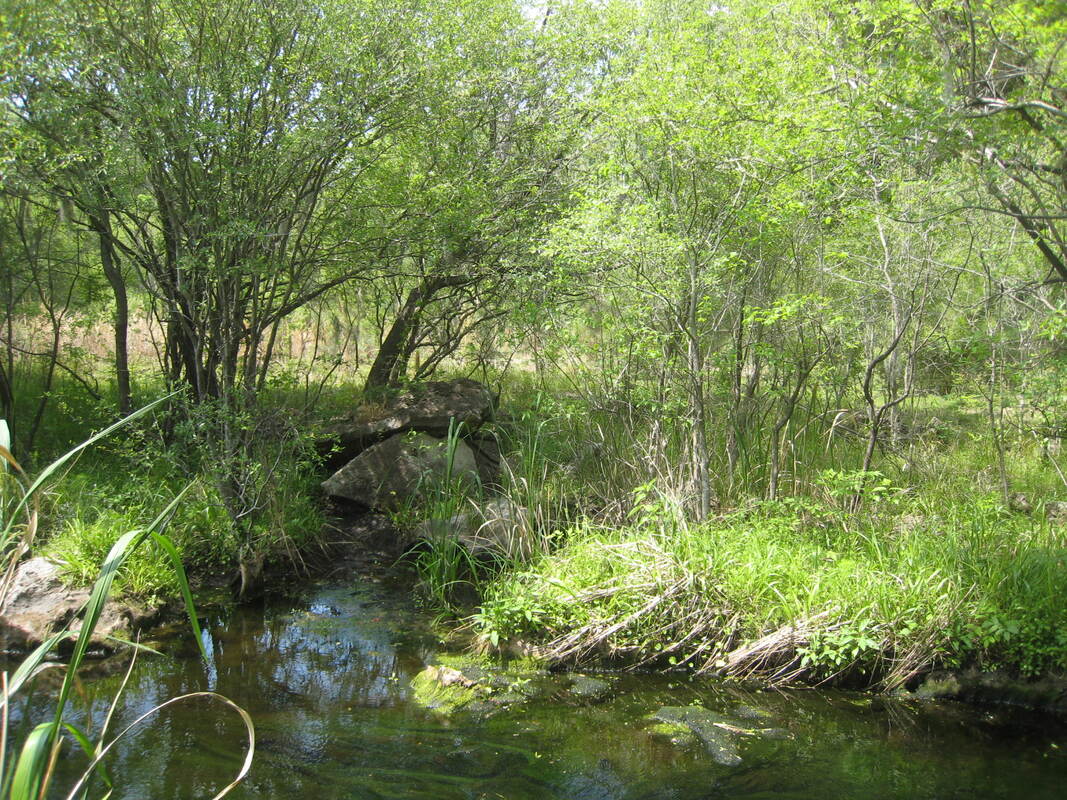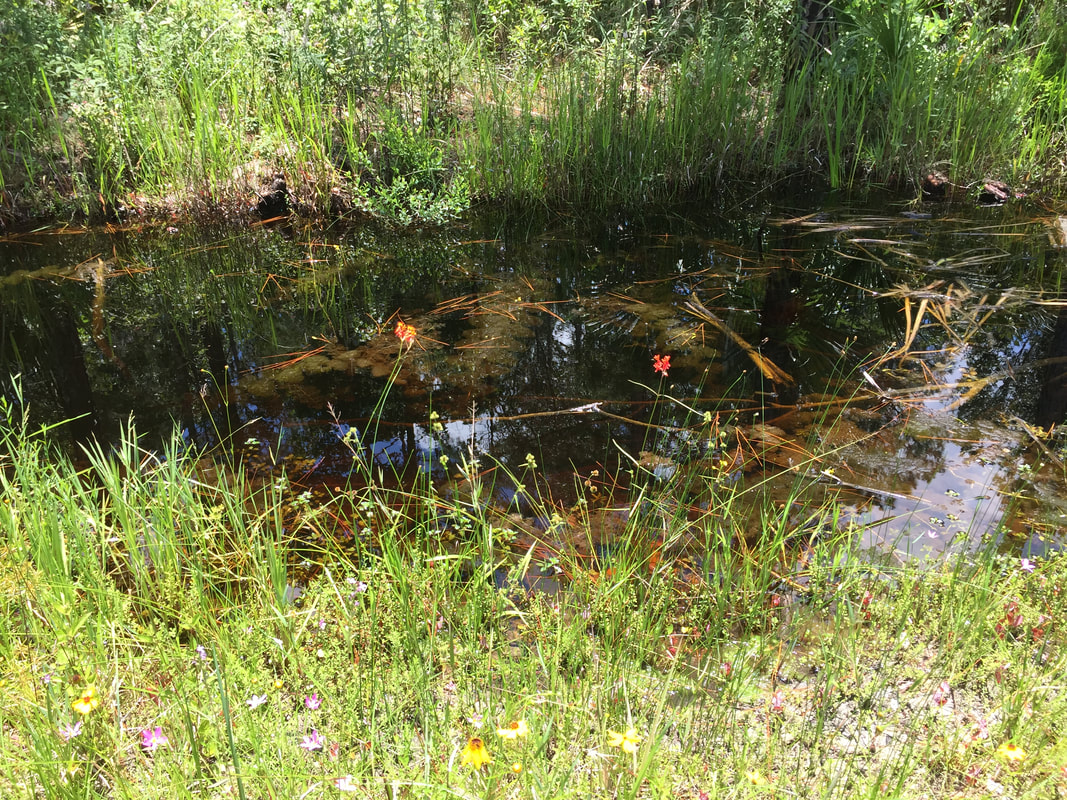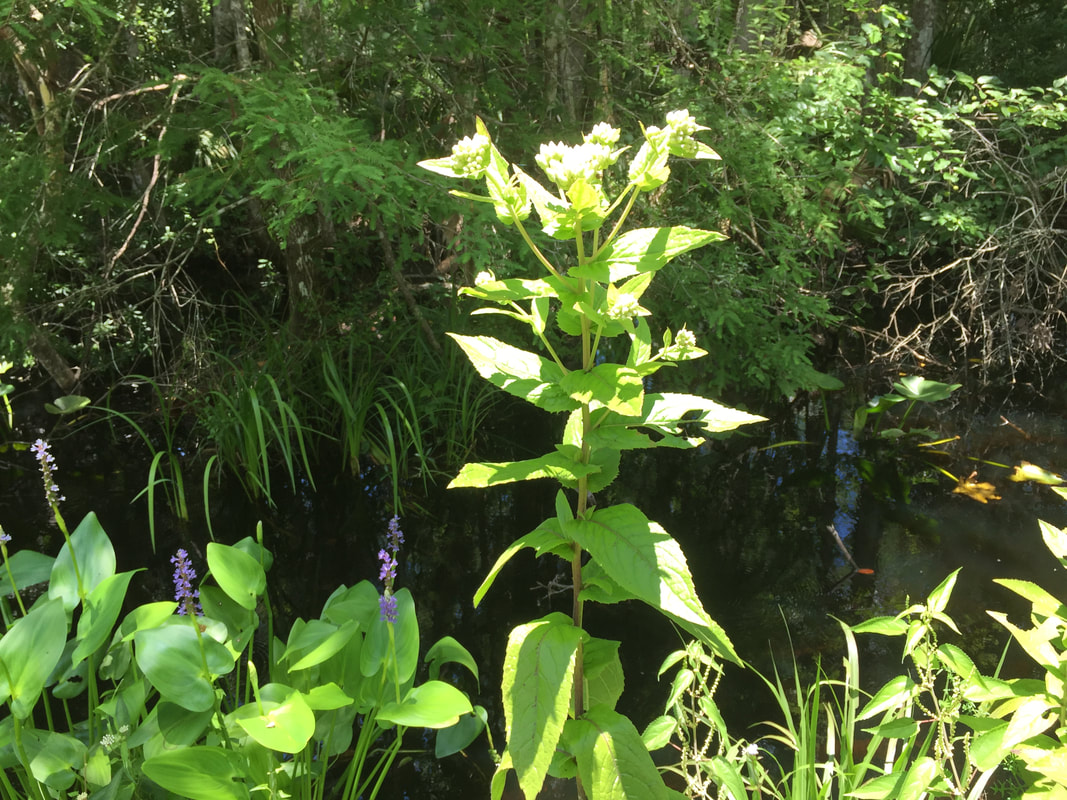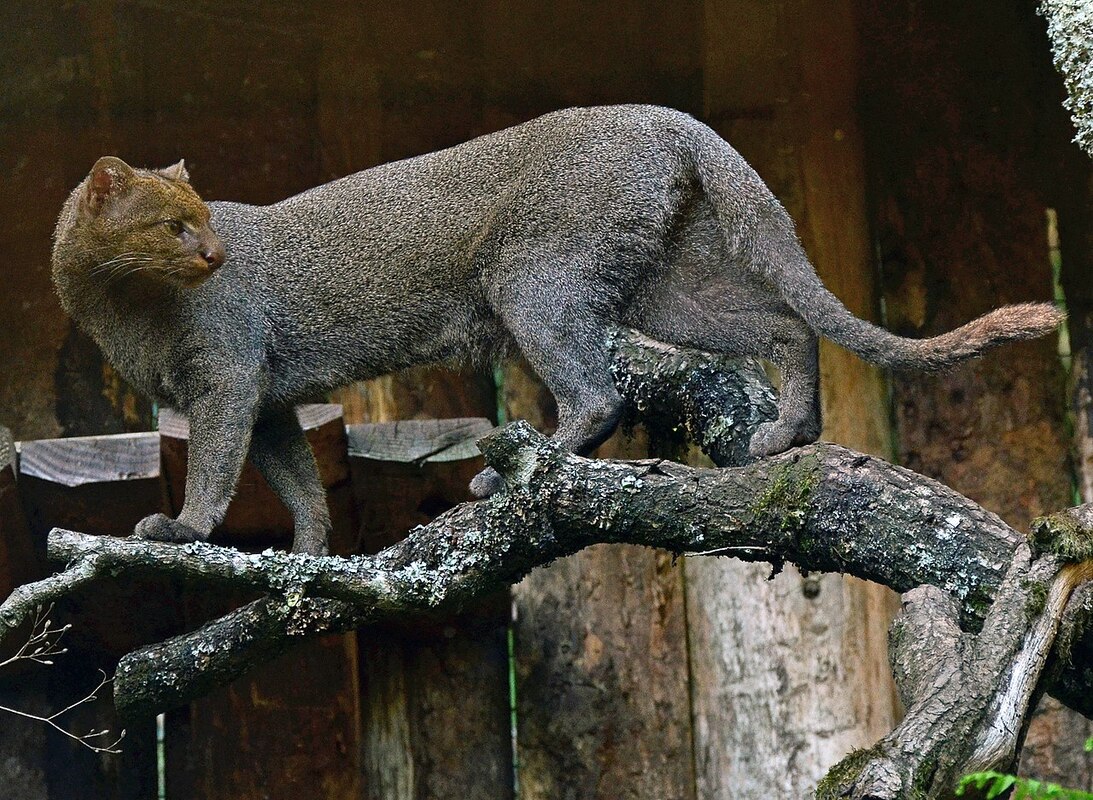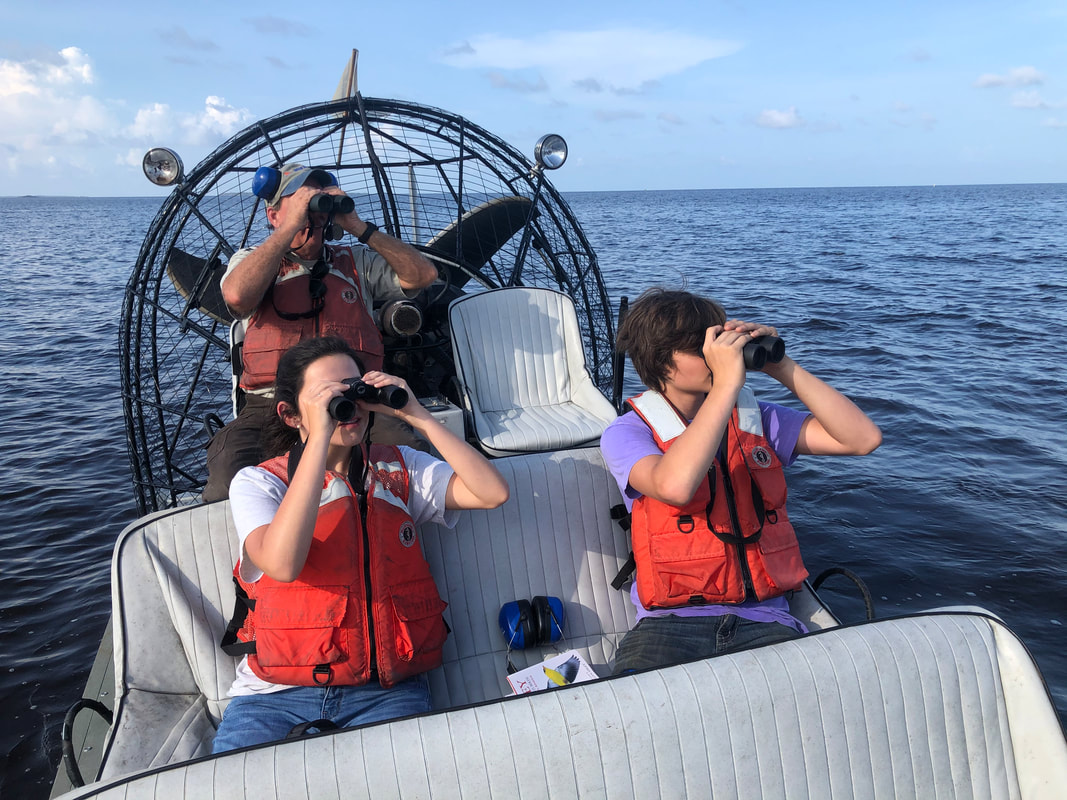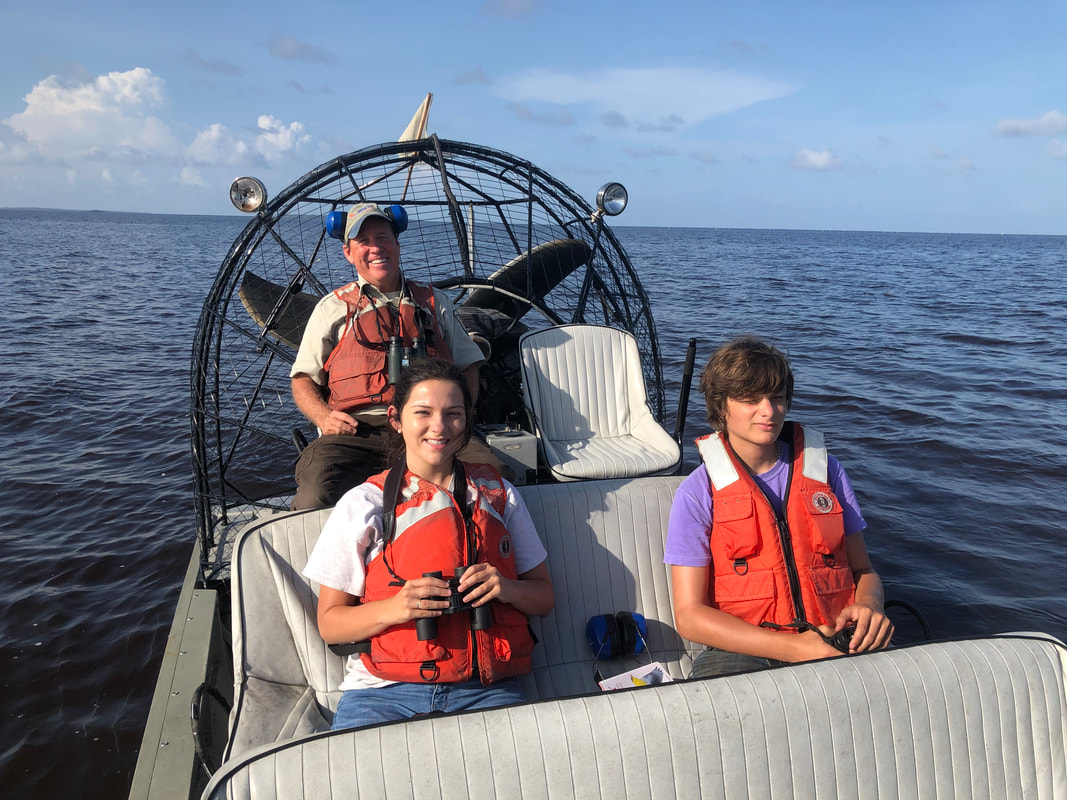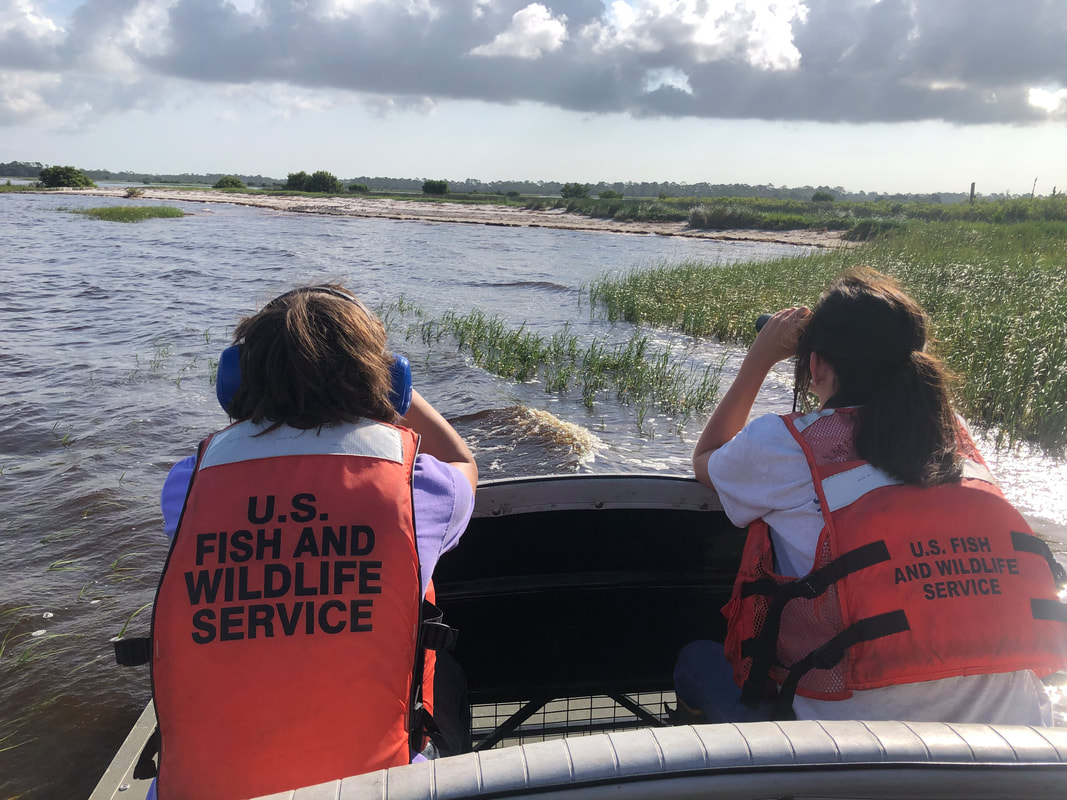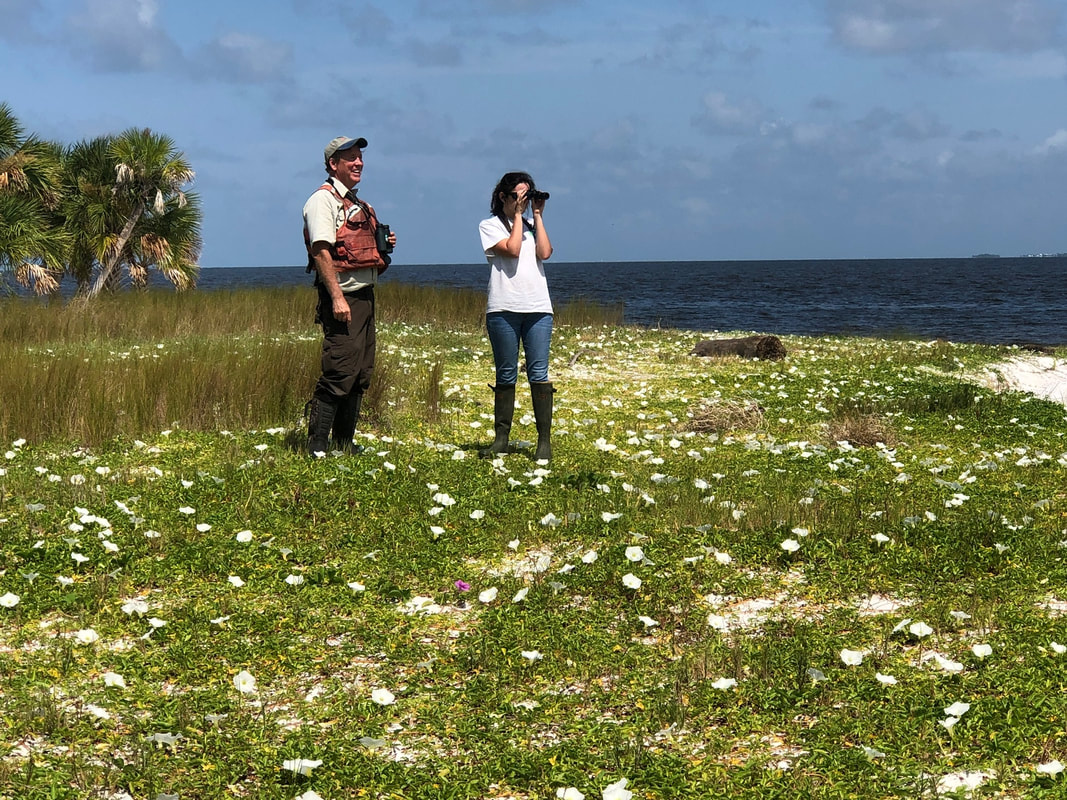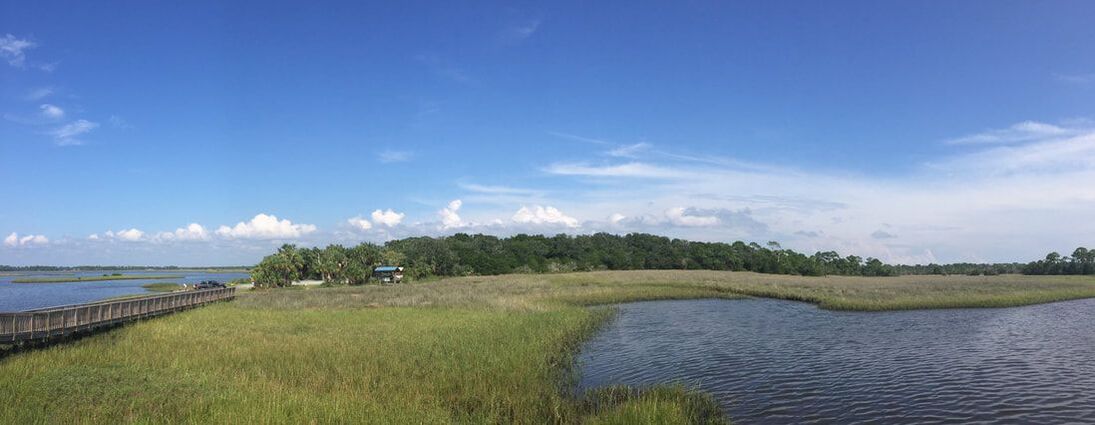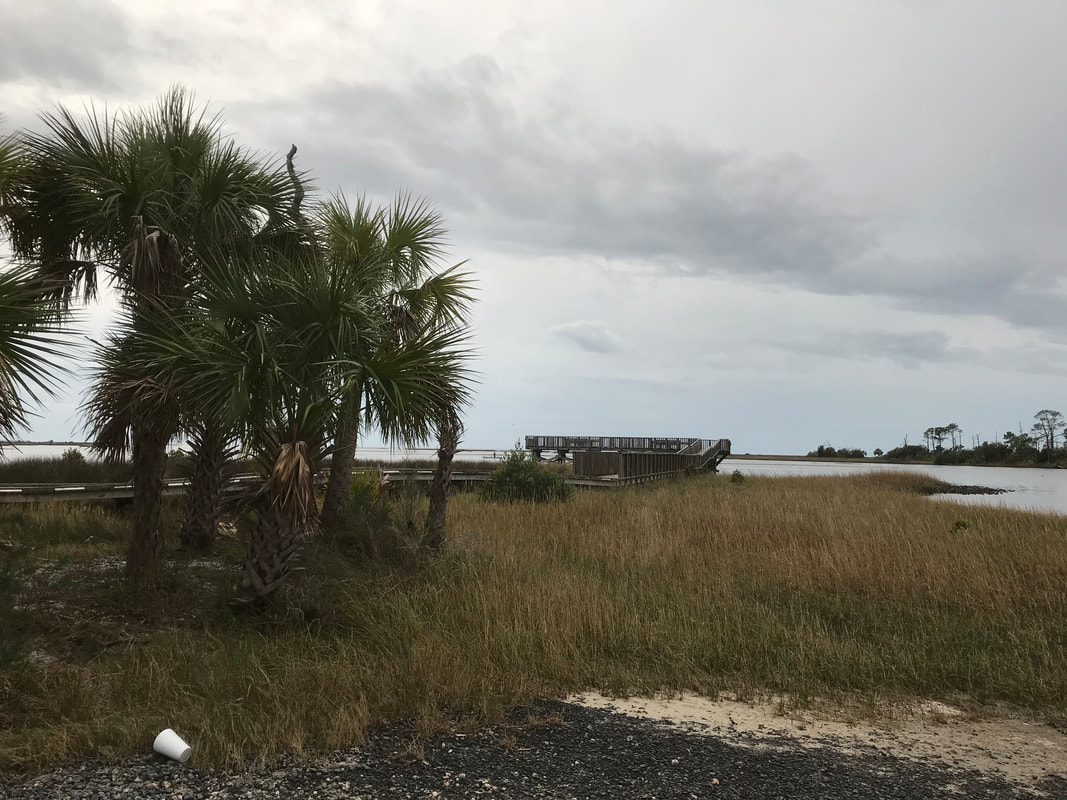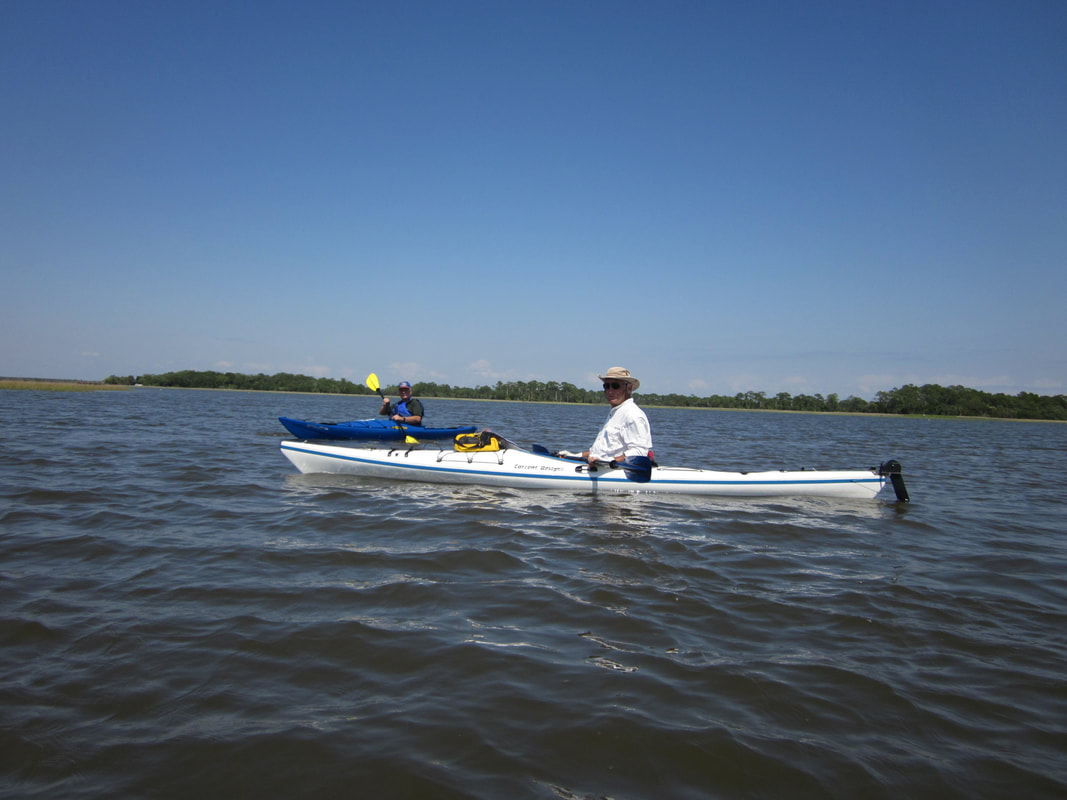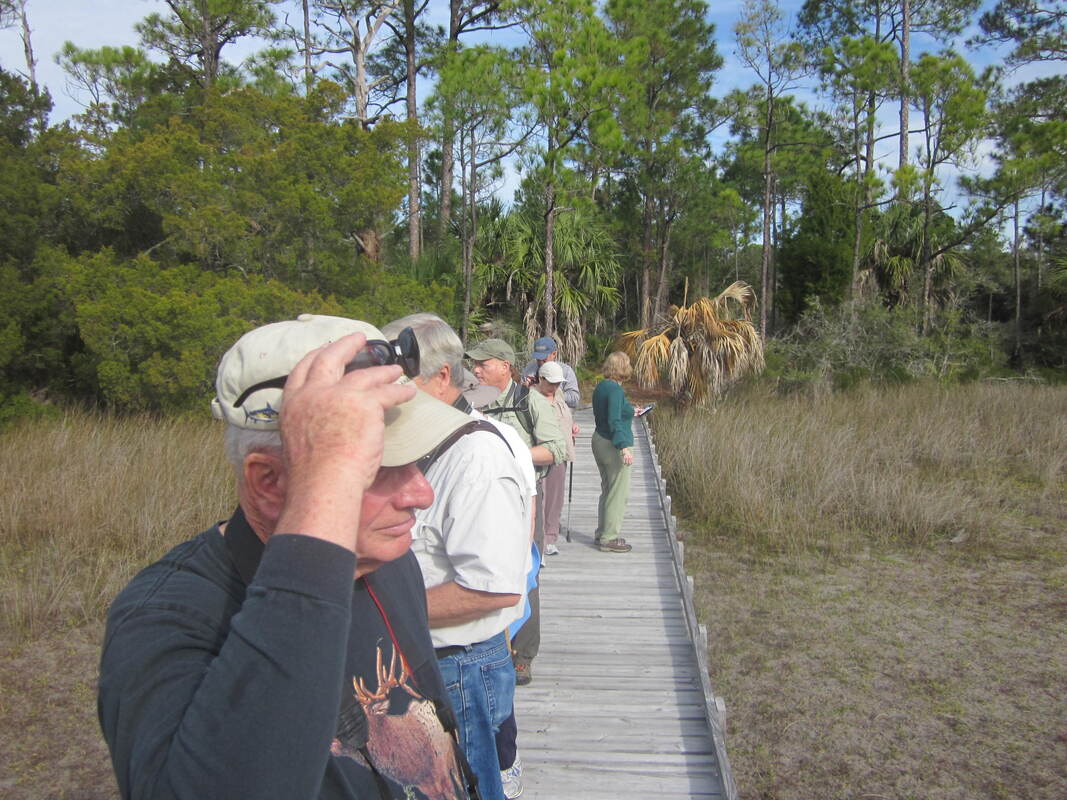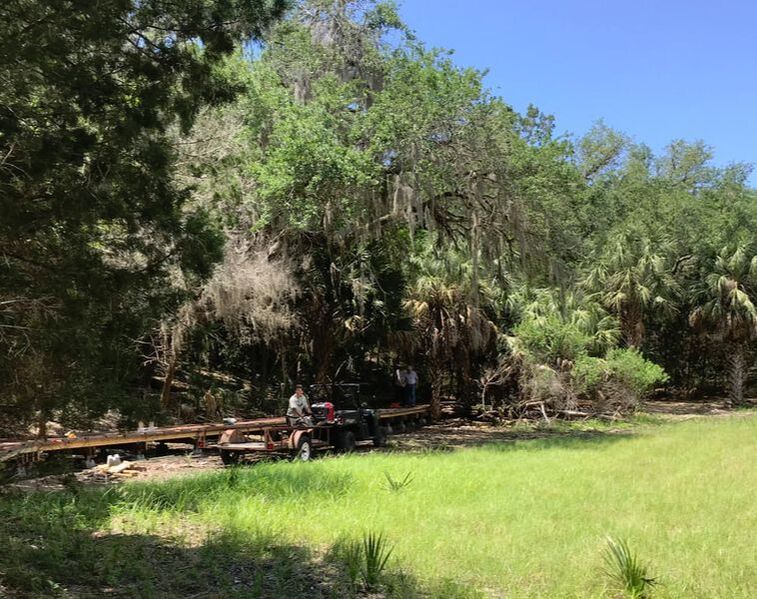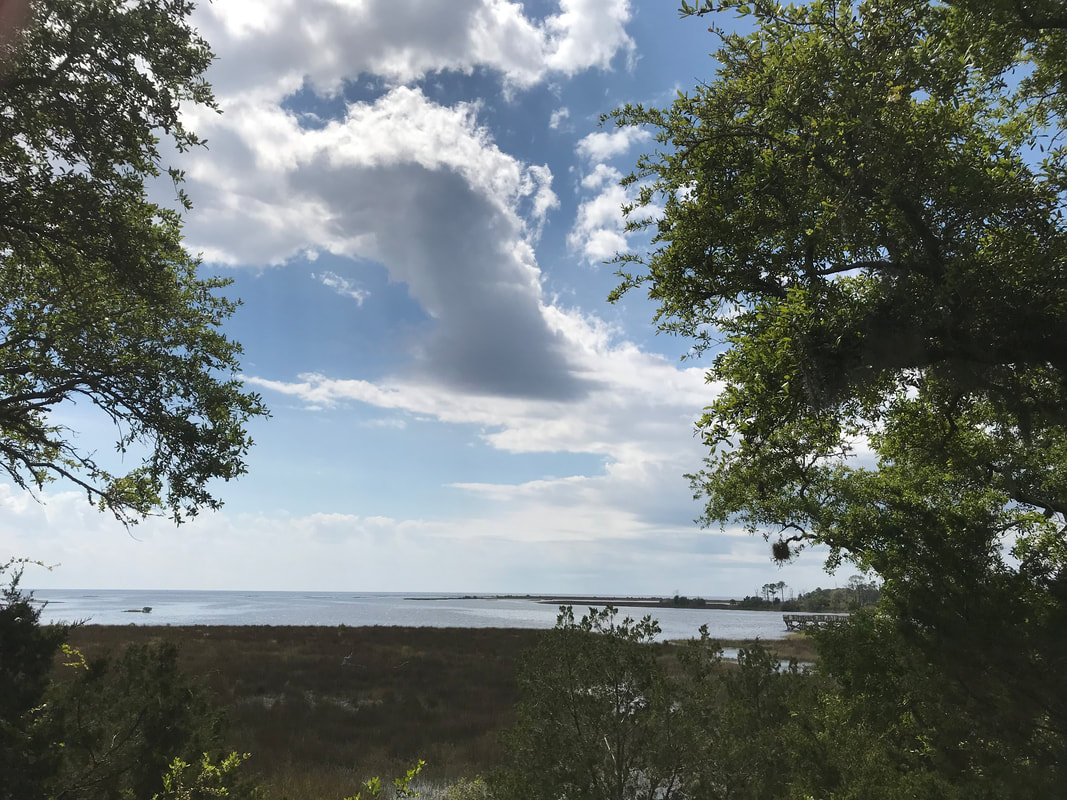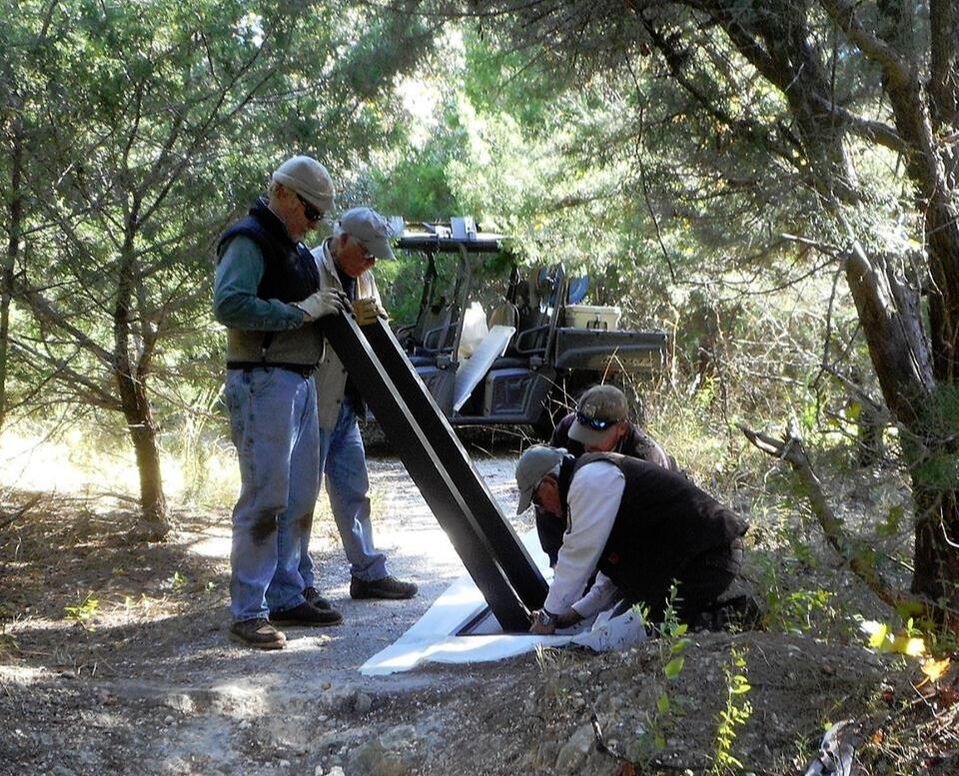|
A much-anticipated report from Gina Kent, Senior Conservation Scientist from Avian Research and Conservation Institute (ACRI) in Gainesville, indicates that Suwannee's movements were almost entirely monitored from afar this season due to travel restrictions. It appeared that in April he was using and visiting a centralized location near his 2019 nest. Clusters of GPS locations inferred that there was most likely a nest attempt. By May, he had not returned to that location. This was all in a timeframe that was too short to raise and fledge young. Further investigations by USFWS's Larry Woodward and later by ARCI, revealed an empty nest. Cause of failure unknown. Meanwhile, Suwannee continues to do well and has stayed close within the bounds of the Refuge and the neighboring conservation easement areas to the east. His travels, starting in early July, have led to trips east and northeast to surrounding agricultural fields, most likely filled with bugs. This is the time of year all kites need to fatten up for their 5,000-mile trip to South America for the winter. If you’re interested in catching a glimpse of Suwannee and your travels can safely take you through the agriculture fields southwest of Chiefland, perhaps you will find a foraging aggregation of Swallow-tailed Kites. Keep your eye out for one with a "bump" on its back and maybe you'll see our celebrity kite. If you do, please report it to ARCI on the "Report Sightings" page of their website www.arcinst.org. This tracking program is funded by Friends and additional monies are necessary to keep it going. One way income is raised is through the sale of Suwannee t-shirts. There is a limited supply, but the inventory will be replenished as needed. For more information, contact Friends board member Debbie Jordan at [email protected]
0 Comments
A Note from Deputy Refuge Manager Larry Woodward My hopes and prayers are that this update finds all our FRIENDS healthy and maintaining the best sense of normalcy that can be expected during this event. As the Refuge staff has been struggling to navigate our course through these unprecedented times, every day brings a barrage of updated facts, figures, and advisories, but the following picture depicts the unavoidable. Rest assured, the staff at the Refuge are in high gear managing and protecting critical natural resources, maintaining visitor use facilities, and conducting essential biological monitoring projects. Aside from the Office and Shop Complex being closed to the public, all recreational facilities remained open since the beginning of the pandemic, even when most community, county, and state facilities closed. Although a sacrifice, and a potential risk to staff, we felt it necessary to provide access for our visiting public to have a “refuge” to escape the stresses and frustrations of the “new Normal." As for wildlife, they have been extremely active and successful with their endeavors. We have a bear and a fox squirrel hanging around in the vicinity of the office compound, turkeys are happy being turkeys, and the seabirds/waders are bountiful with another great nesting year. The shorebirds are plentiful, but nesting success is minimal due to chronic disturbance by human and domestic animals (i.e. dogs) camping, walking, or beaching boats onto locations that just so happen to be the most important areas for nesting.
Refuge Forester Daniel Barrand has developed plans for habitat restoration along the southeastern margin of the Levy County side of the refuge, paralleling CR347. Near Gates 9A and 9B and inside of Gate 43, Heavy Equipment Operator George Pelt has begun leveling the windrows remaining from the logging days. He created lanes for the farm tractor to roll through and selectively herbicide in the overly-dense mid-story growth areas that currently won’t let even a deer or a hog through. As you drive along 347 you will notice some of the work evidenced by the glaring white sand. Be not alarmed …
Separate incidents over the past few weeks led to two turtle rescue operations, one being in Dixie County while the other occurring in Levy County. They were courageously accomplished by Deputy Manager Woodward and Law Enforcement Officer Valentine. Being well versed in the painful possibilities of receiving a steel jaw handshake from a turtle, something familiar to all those in the field of turtleology, first things are always first. Prior to the hands on portion of the rescue, turtleologists all know to scan the horizon to quickly determine current climatological conditions in order to affirm the chance of thunderstorms. For those not formally trained in the field of turtleology, it is common knowledge that if a turtle determines your presence is displeasing and elects to inflict a painful bite, the cold blooded speed bump will not release its choppers until a loud clap of thunder. If thunder is not in the forecast, and a long term relationship is not to your liking, additional precautions are warranted. In the case of our two tactical turtle rescue operations, both of us were fortunate to leave with all tactile appendages (i.e. fingers) attached. Turtle #1 (aka Dixie) decided to leave the stability and security of a government managed facility (wildlife refuge) and try its luck in the fast pace unforgiving world of the private sector (Anderson’s property). Well, our little turtle friend found out the hard shell truth about entering this lustrous lifestyle. Dixie gotta a little too, let’s say, comfortable on the government side of the fence and couldn’t enter through the fence. Oh, but he tried and tried. That’s when Woodward came along and found this little turtle fella paddling air. I tried my best to convince my new friend to stay on the refuge, but I am here to serve. I clipped a couple of wires and away he went. I wish my friend well. Turtle #2 (Levy) found itself on the side of the road in the same predicament that a lot of us find ourselves, on its back struggling to right itself. How the turtle inverted it’s view of the world will always be a mystery aside to those who speak turtlese. After many attempts, giving up will surely become the viable option, but behold, what is that sound, why it’s a dark grey Ford F-150 bouncing down the road driven by our own Officer Valentine. Springing out of the driver’s side door, and a quick meteorological scan of the horizon, Valentine rapidly assessed the situation, counted her fingers, and flipped the struggling turtle to see another day. After a quick post-action review and an accounting of her fingers, Valentine continued down the road, saving the rest of the world.
The Refuge is engaged in a multi-year effort to restore natural hydrology across the Lower Suwannee Refuge into the Gulf. Several years ago, grants to restore the land and water became available after the Gulf oil spill for high impact projects in the affected region. The Refuge joined with other organizations in a successful hydrology restoration proposal. More details about it are available in Restoration of the Refuge's Natural Hydrology.
The photos show various ditches next to roads. The roads form barriers, keeping the fresh water from flowing naturally across the land and into the Gulf and River.
Post written by Russ Hall At dawn on June 21 of this year, Peg and I were at Shell Mound, seeking to recreate the experience of the Summer Solstice that Native Americans had a millennium ago. Daybreak on the fishing dock was lovely as we watched the sunrise in the east. We had the place almost to ourselves—except for swarms of no-see-ums. They kept us from lingering and we were soon on our way back toward Cedar Key. A short distance beyond the bridge over Dennis Creek Peg noticed an animal perhaps 50 yards ahead of us on the side of the road. Shadows were long and the animal was backlit, but its outline was clearly visible. It must be a fox, I thought. When it turned and made for the tree line, however, I noticed that its bounding gait was not at all like a fox. “It’s a bobcat,” I exclaimed. “But it had a long tail,” Peg said. Hmm, a cat with a long tail. Could it be the elusive jaguarundi?
So, putting an end to the mystery is a challenge for anyone who has a wildlife camera and is looking for a project.
YCCers Shelby Holland and Gabriel Lauer with Refuge Biologist Vic Doig on a shorebird survey. Each summer, the Lower Suwannee NWR participates in the Youth Conservation Corps (YCC) program. It is a federal government, summer youth employment program hiring teens from 15 through 18 years old, who are permanent US residents with a work permit and Social Security number. The work is at participating national parks, forests, wildlife refuges, and fish hatcheries. It is intended to develop an ethic of environmental stewardship and civic responsibility. YCC programs are 8 to 10 weeks and members are paid the minimum wage for a 40-hour work week. This year, the Refuge is hosting two summer YCC Students: Shelby Holland from Chiefland, who was the YCC Youth Leader last year, and Gabriel Lauer from Cedar Key. They are working as a team on various Refuge maintenance projects including, but not limited to mowing, rehabbing the yellow gates, garbage and cleaning details, posting signs, and assisting Crystal River NWR YCCers. Teens who would be interested in applying for a YCC job for a future summer should text or call Refuge Manager Andrew Gude at 703.622.3896.
Shell Mound, on the Levy County side of the Lower Suwannee NWR, attracts thousands of visitors each year. Some come to fish from the pier. Others put in their kayaks and small boats at the tide-dependent launch area. Some walk the one-mile Dennis Creek Trail through marshes and hammocks. For many, the highlight of the visit is the walk on the self-guided, less than a half-mile Shell Mound archaeological trail. Despite its unassuming name, Shell Mound (8LV42), is a large shell-bearing archaeological site that was once the location of special gatherings for Native American groups across the broader region. The site rose to prominence as a ritual center at about A.D. 400 and continued through A.D. 650. Archaeologists refer to places such as this as “civic-ceremonial centers,” locations of both residence and ritual activity. Like other civic-ceremonial centers in the region, Shell Mound drew its significance from a nearby cemetery, the hallowed ground of ancestors from far and wide. The site features mounds of marine shell (predominately oyster) measuring 20 feet high surrounding a large central plaza. Excavations by archaeologists from the University of Florida have discovered the remains of large feasts that took place in the summer – likely celebrating the Summer Solstice, the longest day of the year. Today, Shell Mound is part of the Lower Suwannee National Wildlife Refuge and thus under the stewardship of U.S. Fish and Wildlife Service with the help of community groups such as the Friends of the Lower Suwannee Wildlife Refuges. Come tour this incredible site and learn more about Shell Mound and its inhabitants by taking the self-guided walking tour. Click the links below to read the Interpretive Panels you will see along the short trail. |
Archives
June 2024
|

Friends of the Lower Suwannee & Cedar Keys National Wildlife Refuges
P. O. Box 532 Cedar Key, FL 32625 [email protected] We are a 501(c)(3) nonprofit organization. |
|
